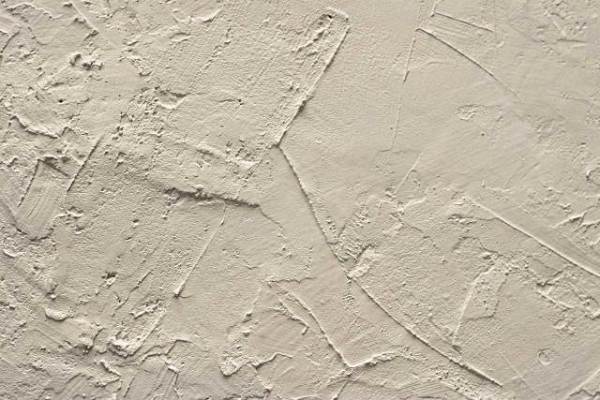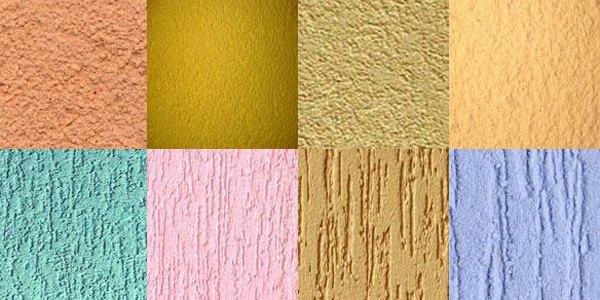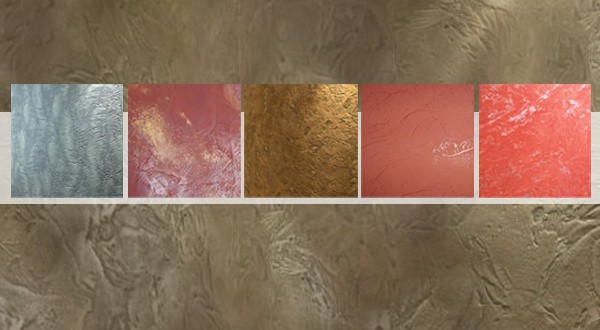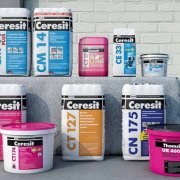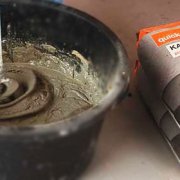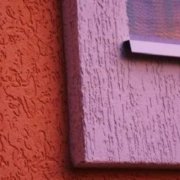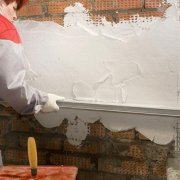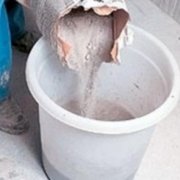Features of the use of dry decorative plaster
Today on the market there are many materials designed for finishing walls. In the range of finishing materials, decorative dry stucco occupies a special place due to the uniqueness and originality of the created surface. A variety of textures, color schemes, application methods allows you to realize any design solution.
The content of the article
Advantages and disadvantages of the material
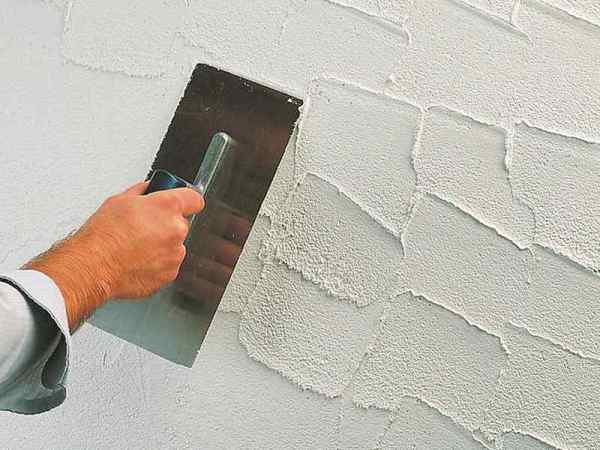
The main advantages of its use in the interior:
| 1. | Universality. | Decorative plaster can be used for both internal and external walls (see Facade decorative plaster: choose correctly) with almost any foundation - concrete, brick, plasterboard. |
| 2. | Used for all shapes and surfaces. | Plaster can be used on any form - flat, convex, concave, and the coating is seamless. |
| 3. | Exclusivity of the created texture. | Each application is unique, even two rooms made by one master in the same technique will have their own characteristics. |
| 4. | Durability. | Decorative plaster is one of the most ancient finishing materials. It was used in ancient Egypt and has survived to our time. |
| 5. | Strength. | Decorative plaster coatings are significantly stronger than other finishing materials and can withstand significant mechanical stresses. |
| 6. | Abrasion resistance. | Stucco is practically not inferior faux stone and allows multiple wet cleaning, which allows for many years to maintain it in its original condition. |
| 7. | Exceptional tactile properties. | The coating is incredibly pleasant to the touch, a variety of textures create a relief similar to natural materials. |
| 8. | Environmental friendliness. | The coating is environmentally friendly, and protective waxes are made from natural materials. |
| 9. | Ease of cooking. | Dry decorative plaster can be prepared (mixed with water) in the quantity necessary for use. |
Among the disadvantages, there are several technological features of the application of the material:
- Plaster decorative dry mix or ready-to-use paste is applied using the "wet" technology, the process is quite lengthy and requires drying of each layer.
- Continuity, the coating is applied to the entire wall in one go to prevent the formation of visible joints.
- Difficulty of removal (see How to remove old plaster from walls without problems) If you need to replace the coating, the plaster will have to be knocked down, which is quite time-consuming.
Types of plaster
Dry decorative plaster is produced:
- Based on gypsum.
- On a cement basis.
- Acrylic (see Acrylic plaster for the facade: how to use).
- Silicate-silicone.
The difference between decorative plaster and ordinary material is the addition of mineral components, various fillers and additives:
- As a rule, marble chips with fractions of various sizes are used as filler.
- The particle size determines the depth of the pattern and usually does not exceed 5 mm.
Note.The composition based on gypsum is used only for interior decoration in dry rooms.
- Cement compounds can be used in any room and for outdoor decoration.
- Acrylic and silicate-silicone compounds are used to create complex textures, both for exterior and interior decoration.
The price of the mixture varies depending on the manufacturer, type, weight of the package and can range from 300 rubles for a cement-based plaster and up to 2000 rubles for a mixture on a silicate-silicone basis for a 25 kg bag.
Application technology
So:
- Stucco finish is not particularly difficult and can be done with your own hands:
It does not matter what will be used - the finished mass or dry mix, decorative plaster is applied the same way. - The instruction for the preparation of the working mixture establishes the proportion that must be observed when mixing the dry mixture with water.
- Before use, it is necessary to prepare the walls or ceiling - remove the old coating, primer and level it.
Tip. Before applying the base coat, it is recommended to apply the first preliminary coat to avoid gaps. If you plan to apply a sufficiently thick coating, then thorough preparation is not required, the plaster will hide minor defects.
- The application of decorative plaster opens up unlimited possibilities in choosing the application method for creating the texture.
Stucco texture
However, there are several proven textures that look most advantageous in any interior:
- Lamb - the result is a rough, uniformly granular surface.
- The fur coat is a rough surface with irregularities that imitate slight hairiness.
- The bark beetle is the most famous texture that imitates the furrows of insect-eaten wood.
Application Instructions:
- Work is carried out by terminations on an area of approximately 0.5 sq.m.
- The material is applied with a spatula in an even layer of the required thickness.
- Then a grater or other tool on the surface creates the desired texture.
For example, the bark beetle texture can be created by movements in a vertical, horizontal or chaotic direction. Once the desired result is achieved, they begin to work in the neighboring area, avoiding a break in work.
Material consumption
The consumption of the dry mixture of decorative plaster for each application method is individual and is determined by the texture, particle size and layer thickness.
Note. When applying the bark beetle texture, the depth of the grooves, and accordingly the thickness of the layer, is determined by the size of the solid particles in the mixture.
An approximate dependence of the flow rate on the particle size is given in the table:
| Particle size mm | Mixture consumption, kg / sq.m |
| 1,5 | 1,5-2 |
| 2-3 | 2,5-3 |
| 3-4 | 3,5-4 |
Color schemes
Dry decorative plaster comes in white:
- Looks most impressive in bed or ocher colors.
- To obtain the desired color, it is possible to tint the material in bulk.
- For tinting, special pigments are used, mixing which in a certain proportion achieve the desired shade.
- Please note that the shade of the material on the wall may look completely different from that in the tank, so before applying to the wall, you should check the color on the test section of the wall.
- Allowed staining on the finished surface. For this, almost any paint can be used.
When painting a plastered surface, various decoration methods are used - adding sparkles, developing protruding or recessed parts of the texture, glazing and more.
Material protection and care
To give additional decorative properties and greater resistance to external influences, special finishing materials are used - waxes, glazing compositions, varnishes.
- Natural material based on bees or artificial wax gives the plastered surface water-repellent properties, shows relief, gives shine and depth. Wax is sold ready to use. It can be transparent, pearly, with a honey or gold tint. In addition to factory colors, wax can be tinted in the desired shade.
- Glaze is a translucent coating designed to give depth or an additional shade. Glaze can be transparent, white, have shades that mimic a gilded, silver or bronze surface.
- Ordinary acrylic varnish can be used as a protective layer, giving additional shine or dullness.
Note. To apply them, use a brush, rubber spatula, sponge or fur mitten. After drying, the wax or varnish forms a strong protective film.
The dried coating can be washed using soapy water or mild detergents.
The video in this article will show all the secrets of decorating with decorative plaster.
